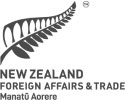Weekly Global Report:
Global
WTO Trade Outlook Revised Up for 2025, but Risks Remain
- The World Trade Organization (WTO) has upgraded its forecast for global merchandise trade in 2025, projecting 0.9% growth compared with a contraction previously expected. The revision reflects stronger-than-anticipated demand in the first half of the year, partly due to companies front-loading shipments to avoid new tariffs. However, the WTO also trimmed its 2026 forecast to 1.8%, warning that trade flows remain vulnerable to geopolitical tensions and policy uncertainty. The report underscores how tariff disputes and supply-chain shifts are reshaping patterns of commerce, with longer-term risks still tilted to the downside. Read more here.(external link)
Americas
ExxonMobil signs production sharing contract with the Government of Trinidad and Tobago
- On 14 August 2025 (Trinidad and Tobago time) US oil company ExxonMobil signed a production sharing contract (PSC) with the Government of Trinidad and Tobago for the Ultra Deepwater 1 block (UD-1). In a post (external link)on LinkedIn, John Ardill, Vice President of ExxonMobil, stated that, “the Ultra Deepwater 1 block, exclusively assigned to ExxonMobil with a 100% working interest, spans approximately 7,100 sq km, surpassing the land mass of Trinidad & Tobago itself. This strategic acquisition opens up new opportunities for ExxonMobil to leverage its advanced deepwater technology and subsurface expertise in exploring this vast frontier block located northwest of the renowned Stabroek block in neighbouring Guyana”. The signing of the PSC followed an announcement in April 2025 by Trinidad and Tobago’s then-Prime Minister Stuart Young that the United States Office of Foreign Assets Control (OFAC) had revoked licences granted to British oil companies Shell and British Petroleum, and Trinidad’s state-owned Natural Gas Company, for the development of two offshore natural gas projects between Trinidad and Tobago and Venezuela.
Peru and Indonesia sign trade agreement
- On 11 August 2025 (Indonesia time), Peru and Indonesia signed a Comprehensive Economic Partnership Agreement (CEPA) in Jakarta. According to a press release(external link) by Peru’s Ministry of Foreign Trade and Tourism, “56% of the products that Peru exports to Indonesia will have immediate access to zero tariff, which includes our [Peru’s] main products such as cocoa, blueberries, avocados, coffee, mangoes, zinc, among others.” In a release(external link) by the Ministry of Trade of the Republic of Indonesia, “benefits for Indonesia include expanding market access for Indonesian products in Peru and the Latin American region, developing the fisheries and mining sectors, and the complementary nature of products traded between Indonesia and Peru.”
U.S.–China Extend Tariff Pause by 90 Days
- On 11 August, the United States and China have agreed to extend their tariff pause for another 90 days, delaying a planned rise in duties until early November. This means that exports from China to the US will continue to be charged a minimum 30% tariff (20% fentanyl tariffs as well as the 10% reciprocal tariffs) and US exports to China will be charged a minimum 10% tariff. The move reassured global markets, with oil and equity prices climbing on expectations of reduced disruption to trade flows. While core issues remain unresolved, the extension leaves more time on the table for both parties to seek longer-term arrangements. Business groups welcomed the pause, though many warned that ongoing uncertainty continues to weigh on investment decisions. Read more here(external link).
North Asia
South Korea announces five-year innovation strategy
- South Korea has unveiled a five-year innovation strategy centred on artificial intelligence (AI), biotechnology, and clean energy to revitalize its economy and secure global leadership in high-tech sectors. The plan, announced by the State Affairs Planning Committee under President Lee Jae Myung’s administration, includes 123 national tasks and aims to transform Korea into one of the world’s top three AI powerhouses. Key initiatives include building an “AI highway” with over 50,000 graphics processing unit (GPU) chips, establishing a national AI control tower, and launching a NZD121.5 billion fund to support strategic industries. The strategy also emphasizes clean energy through an “energy highway” project, expanding renewable infrastructure and modernizing the power grid with AI-driven systems to achieve carbon neutrality and economic growth.
Japan Q2 GDP Beats Forecasts on Exports & Capex
- Japan’s economy grew by an annualized 1.0% in the second quarter of 2025, more than originally forecast at 0.4%. Resilient exports and a rebound in corporate capital spending mark the country’s fifth consecutive quarter of growth. Analysts note that the performance underscores Japan’s ability to ride a wave of global demand despite tariff-driven uncertainty, and the stronger-than-expected data may ease pressure on the Bank of Japan to deliver additional stimulus measures in the near term. Read more here(external link).
More reports
A full list of global economic round-ups can be found here(external link)
If you would like to request a topic for reporting please email exports@mfat.net
External links
The following links may provide useful information to businesses:
NZTE’s website(external link) and their myNZTE(external link) provides a range of insights and tools available to support New Zealand exporters.
The Treasury releases a weekly economic update(external link) every Friday. Stats NZ has published a data portal(external link) with near real-time economic indicators.
MBIE publishes a sector reports series(external link) which provides regularly updated reports on all industry sectors that make up the New Zealand economy. These include official economic data and the challenges and opportunities that face New Zealand’s industry sectors.
Business.govt.nz(external link) provides tools and advice from across government to save small businesses’ time and help make the business a success.
MFAT has created a tariff finder(external link) which is designed to help goods exporters and importers maximise benefits from New Zealand’s Free Trade Agreements and compare tariffs in 136 other markets.
The all of government Trade Barriers(external link) website can be used to register any trade barriers experienced or issues exporting to an offshore market. Queries can be sent via the website or through the MFAT Exporter Helpline 0800 824 605. Enquiries will be sent to the government agency best placed to answer.
Tatauranga Aotearoa Stats NZ provides official data on the value of New Zealand’s exports and imports of both goods and services, by commodity type via the New Zealand Trade Dashboard(external link). This interactive dashboard is updated every quarter and allows for filtering by country and by commodity type.
Sign up for email alerts
If you would like to subscribe to this weekly update, go to our subscription page(external link) or email us at exports@mfat.net
Learn more about exporting
New Zealand Trade & Enterprise’s comprehensive market guides(external link) cover export regulations, business culture, market-entry strategies and more.
Disclaimer
This information released in this report aligns with the provisions of the Official Information Act 1982. The opinions and analysis expressed in this report are the author’s own and do not necessarily reflect the views or official policy position of the New Zealand Government. The Ministry of Foreign Affairs and Trade and the New Zealand Government take no responsibility for the accuracy of this report.
Copyright
Crown copyright ©. Website copyright statement is licensed under the Creative Commons Attribution 4.0 International licence(external link). In essence, you are free to copy, distribute and adapt the work, as long as you attribute the work to the Crown and abide by the other licence terms.

